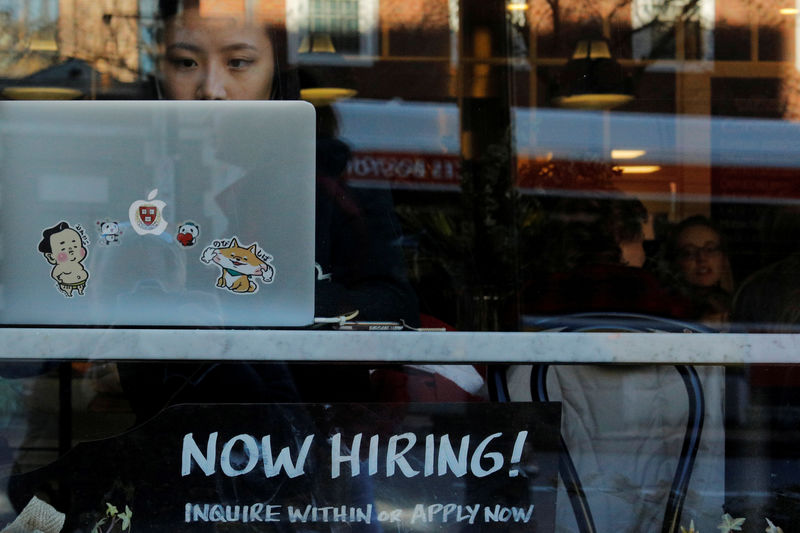By Lucia Mutikani
WASHINGTON (Reuters) - U.S. job openings and hiring fell in June, suggesting that demand for labor was cooling in tandem with a slowing economy, which could provide another reason for the Federal Reserve to cut interest rates again next month.
The report from the Labor Department on Tuesday came against the backdrop of an escalation in the trade war between the United States and China, which caused a sharp sell-off on Wall Street on Monday and sent U.S. Treasury 10-year yields tumbling to the lowest since October 2016.
Concerns about the impact of the U.S.-China trade tensions on the 10-year economic expansion, the longest in U.S. history, prompted the Fed to cut rates last week for the first time since 2008. Financial markets have fully priced in further monetary policy easing at the U.S. central bank's Sept. 17-18 meeting.
"Companies may be having difficulty filling positions or may be reticent to hire given the growing uncertainty in the economy," said Sophia Koropeckyj, a senior economist at Moody's Analytics in West Chester, Pennsylvania. "Business confidence has taken a beating this year."
Job openings, a measure of labor demand, slipped by 36,000 to a seasonally adjusted 7.3 million in June, the government said in its monthly Job Openings and Labor Turnover Survey, or JOLTS. Since hitting an all-time high of 7.6 million in late 2018, job openings have been flat this year, suggesting some easing in labor market conditions.
The job openings rate dipped to 4.6% from 4.7% in May. There were declines in vacancies in the leisure and hospitality sector, and construction. But job openings increased in the real estate and rental and leasing industry, and state and local government education.
Hiring decreased by 58,000 jobs to 5.7 million in June. The hiring rate was unchanged at 3.8%. Hiring fell in the manufacturing and professional and business services industries. It increased by 76,000 jobs in the accommodation and food services industry.
DEMAND SLOWING
"Employer demand is slowing down, and the labor market isn't improving at the rate that it was before, but things aren't getting worse," said Nick Bunker, an economist at Indeed Hiring Lab. "The slowdown is happening across the entire economy."
The moderation in hiring in June suggests a big rebound in job growth in the months ahead is unlikely. Nonfarm payrolls increased by 164,000 jobs in July, down from 193,000 in June, the government reported last Friday.
Economists attribute some of the slowdown in hiring to the fading stimulus from last year's $1.5 trillion tax cut package.
The economy grew at a 2.1% annualized rate in the second quarter, decelerating from the January-March quarter's brisk 3.1% pace.
"Job openings have eased in such sectors as information, finance, and professional and business services, a possible harbinger of weaker employment gains in coming quarters," Moody's Analytics' Koropeckyj said.
The number of workers voluntarily quitting their jobs dipped to 3.4 million in June from 3.5 million in May. The quits rate was unchanged at 2.3% for the 13th straight month.
The quits rate is viewed by policymakers and economists as a measure of job market confidence.
The decline in the number of workers quitting their jobs was concentrated in transportation, warehousing, and utilities, and state and local government, excluding education. There was, however, an increase in the number of workers quitting their jobs in the construction sector.

Layoffs edged down in June, pushing the layoffs rate to 1.1% from 1.2% in May. Layoffs fell in professional and business services as well as the arts, entertainment, and recreation sector, but rose in the accommodation and food services sector.